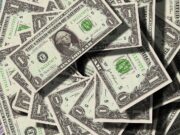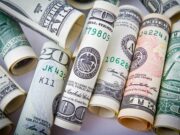What is ‘Unbiased Predictor’
The notion that the current market price of a physical commodity (its cash price or currency) will be equal to its anticipated future price based on the market’s forward rate. Like anything that relies on interest rate projections, this outlook can change as economic conditions change.
Explaining ‘Unbiased Predictor’
In statistical terms, “bias” is generally considered to be the variance between a prediction and the actual outcome, so an unbiased predictor is one that, one average, closely forecasts the future behavior of the variable under consideration. For example, if a futures contract is considered an unbiased predictor of oil prices, then when the contract expires the price of oil should correspond with the anticipated price.
Unbiased Predictor FAQ
What does it mean for an estimator to be unbiased?
What is an Unbiased Estimator? An unbiased estimator is a measure for approximating a population parameter. In other words, if the estimator (i.e. the sample mean) equals the parameter (i.e. the population mean), it means it’s an unbiased estimator.
How do you show an estimator is unbiased?
Z,A parameter’s expected value in an unbiased estimator is equal to its true value. An unbiased estimator estimates parameter that are approximately correct.
Why sample mean is unbiased estimator?
The sample mean is a random variable that estimates the population mean. The expected value of the sample mean and the population mean µ are equal. Therefore, the sample mean is an unbiased estimator of the population mean.
Why are unbiased estimators important?
The theory of unbiased estimation is very important to the theory of point estimation, since in reality, it is important that the unbiased estimator have no systematical errors.
What is interest rate parity with examples?
A currency with lower interest rates will trade at a forward premium compared to a currency with a higher interest rate. For example, the U.S. dollar trades at a forward premium against the Canadian dollar while the Canadian dollar trades at a forward discount against the U.S. dollar.
Further Reading
- Forward premiums as unbiased predictors of future currency depreciation: a non-parametric analysis – www.sciencedirect.com [PDF]
- Forward foreign exchange rates as an unbiased predictor of future spot rates: The empirical evidence – www.indianjournals.com [PDF]
- Google Internet search activity and volatility prediction in the market for foreign currency – www.sciencedirect.com [PDF]
- Non-informative tests of the unbiased forward exchange rate – www.jstor.org [PDF]
- Is the IPO pricing process efficient? – www.sciencedirect.com [PDF]
- The 'efficiency'of the London Metal Exchange: a test with overlapping and non-overlapping data – www.sciencedirect.com [PDF]
- Interest rate risk management with futures for financial intermediaries – www.tandfonline.com [PDF]

































